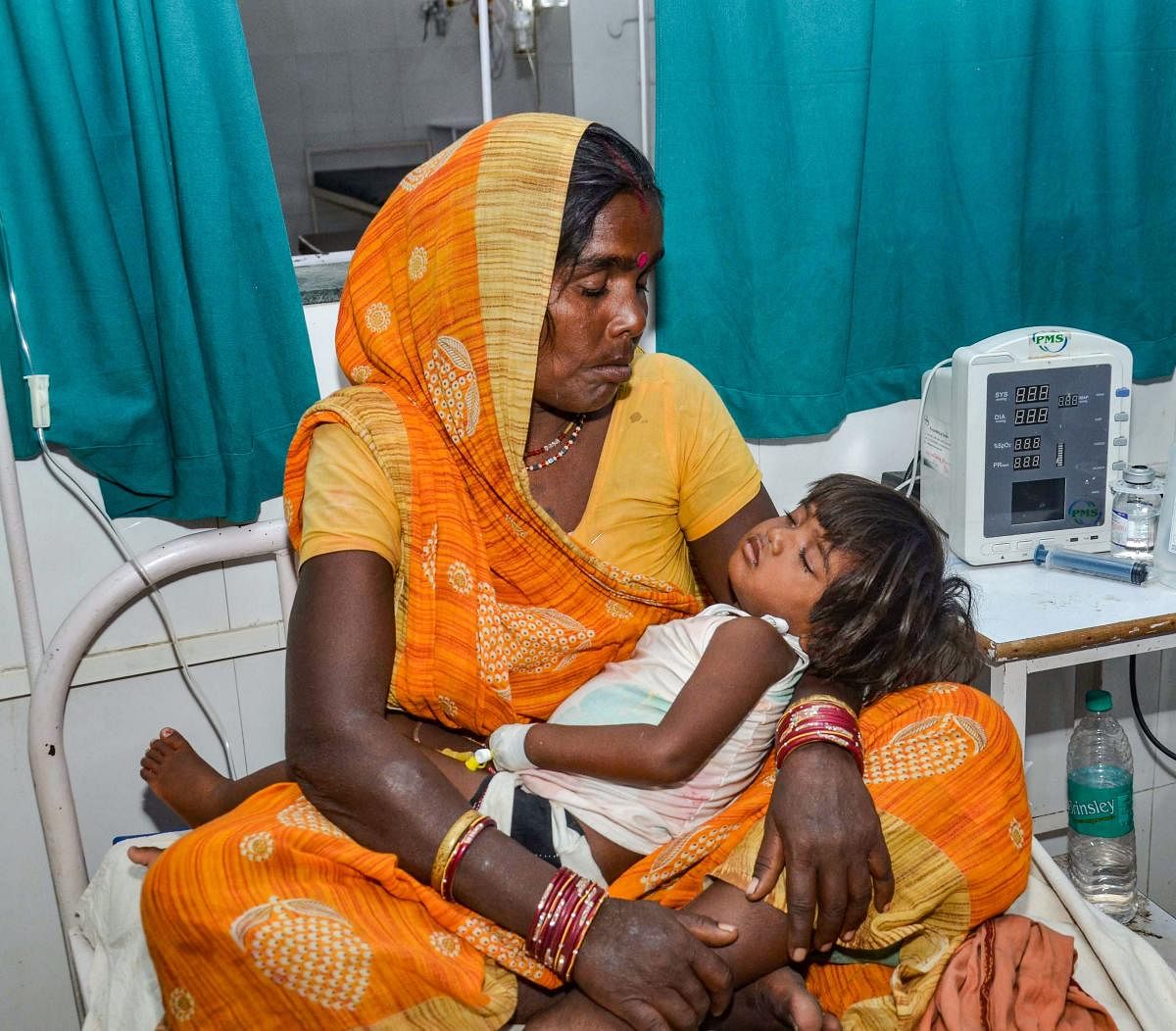
The Supreme Court recently issued a notice to the Bihar government directing it to explain the death of more than 120 children purportedly due to Acute Encephalitis Syndrome (AES) outbreak in June. This begs the question: What is the state of healthcare in India? The short answer: The next Muzaffarpur is waiting to happen and is a matter of when, and where, and not if.
The fragility of the public healthcare system represents a deeper malaise that is situated at the confluence of three key lacunae: the absence of social accountability, poor service delivery capacities, and inadequate public investment. As a people we remain callous, refusing to learn lessons from the past. The loss of lives as a result, time after time, is unconscionable. How might we address this spectre that especially haunts the poor, disadvantaged and vulnerable populations? How do we hold the State to account?
Outbreaks of AES is common to the northern districts of Bihar and eastern Uttar Pradesh. The first case of AES in Muzaffarpur district was recorded in 1995 and has since recurred periodically. Press reports pointed to 143 deaths in 2013, and 355 in 2014. In more recent years till 2019, the death toll remained under 20. But that had little, if anything, to do with State initiatives. The question is whether the states in India are equipped to handle the outbreak of epidemics?
Consider these facts: the 2014 Indian swine flu outbreak — Gujarat and Rajasthan were the worst affected. India reported 937 cases and 218 deaths from swine flu that year; the 2014 jaundice outbreak in Sambalpur in Odisha — the cause of the outbreak was suspected to be the contamination of drinking water supplied by the Public Health Engineering Department. The death toll was 39; the 2018 Kerala Nipah virus outbreak — it was, mercifully, localised in Kozhikode and Malappuram districts of Kerala, but it still claimed 17 lives. This list can go on and no state in India is an exception to this challenge.
Preparing for the sudden outbreak of epidemics or public health crises, including routinely recurring ones like dengue, chikungunya, and foot-and-mouth disease, which are virus-based, requires that policymakers understand not just the etiology of the disease and the science of limiting its transmission or implementing a treatment plan, but also the practical challenges of crafting a real-time response strategy to scale. Achieving success at such scales is largely a function of strategic policy choices that enhance preparedness at the sub-national level, chief among which is the recognition that pathology is a necessary component of good public healthcare. In the immortal words of Sir William Osler, ‘As is your pathology, so is your medicine’.
The response to the 2019 Muzaffarpur AES outbreak illuminates these challenges and highlights steps necessary for better preparedness of the public healthcare system.
As a country, we have underinvested in pathology services, with serious long-term consequences. This gets exacerbated at the state-level with even poorer facilities and capacities. Access to specialised laboratories undertaking disease surveillance is central to enhancing the response capabilities of the states in India. The response to the AES outbreak in Bihar was slow and reactive. The state did not respond with the urgency that the crisis demanded until several days after transmission had started to dramatically accelerate and many children had died.
The Centre was also slow in supporting an enhanced response. These delays complicated the task of containing the spread and impact of AES. Even when the healthcare system and the state machinery expanded their efforts, there was little understanding of what strategies and interventions might prove effective. If universal healthcare is to become a reality and the Sustainable Development Goal (SDG) 3 — ‘Ensure healthy lives and promote wellbeing for all at all ages’ — has to be reached by 2030, the Centre and the states should work together to help build a sub-national network of laboratories that will support pathology services.
Equally, state governments must invest in advance planning on three operational elements:
• Trigger indicators: A standard protocol comprising well-defined standards and processes is needed for systematically monitoring and assessing the adequacy of an outbreak response operation relative to the trajectory of an outbreak. This should be linked to a normative threshold, which when breached would trigger an escalated response. Indicators might include number of children affected, measured by the number of cases reported, the geographic spread measured by the number of tehsils or districts affected, mass infections of health workers, accelerated spread of a disease with no available medical countermeasures, and excessive patient load on the local public healthcare facilities.
• Strategic shifts: There is an urgent need for more data analytics-based planning across different disease patterns; and temporal-spatial-context specific analysis to determine how containment strategies must change at different scales of transmission. While some prevention interventions might work at a normal incidence scale, and can potentially be expanded rapidly, others may hit roadblocks or, worse still, run counter due to logistic and capacity challenges. States would do well to develop a health atlas that sets out the state-level burden of disease that can support advance preventive measures and enable predictive analysis.
• Social Accountability: The recent experience of states strongly suggests that community approaches to behavioural interventions in times of epidemics and health crises may prove more rapidly scalable than medical interventions for containing the epidemic. For this to happen, a strong community-based accountability structure that empowers community-based institutions such as the Arogya Raksha Samiti and the Anganwadi Samiti to engage the community with actionable knowledge will need to be activated. This implies community engagement on a sustained basis to build capacity.
Muzaffarpur laid bare the inadequacies and the apathy of the public healthcare system. If we want to save our children — the vulnerable — from premature mortality, it is time to recognise that the Ayushman Bharat Yojana alone won’t do.
(The writer is Director, Public Affairs Centre, Bengaluru)